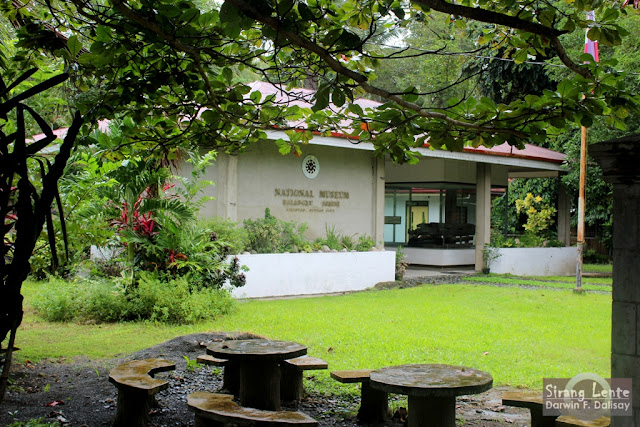
Butuan City is the capital of Agusan del Norte and it is highly urbanized with large establishments; with that in mind, backpacking in this city is easy because all the historical sites are located just within the vicinity, accessible using the local public utility vehicles such as jeepneys and tricycles. During our visit to Butuan, at the intersection of Narra Road (where Jollibee, McDonalds and KFC are located), we chartered a tricycle to visit two museums in the city.
How to Get to Agusan del Norte:
- By Air: Book a flight from Manila to Butuan-Bancasi Airport (BXU). Philippine Airlines, Cebu Pacific, and Air Asia have their regular flights to BXU.
- At the airport, ride in a taxi or public transport to your destination.
Butuan City Tourist Spots:
- Balangay Shrine
- Butuan National Museum
- Golden Tara Landmark
- Magellans Anchorage
- Guingona Park
- Nipa Wine Distillery
It was past 12 noon when we arrived in Butuan City. We had our lunch break at KFC while waiting for our friend. When he arrived, we walked to their house nearby. Tidy up and rested for a couple of minutes. It was a little over 1 PM, and we walked on the road to the intersection again and rode in a tricycle to the city's historical sites.
 |
| A photo of an actual Balangay. |
The Filipino word Baranggay came from the word Balangay or Balanghai, which is a watercraft used by the ancient people in the Philippines for transportation and for barter and trade. If I am not mistaken, it was discussed when I was in the fifth grade in HEKASI. I am happy that today I was able to see the actual relics of Balangay discovered in Butuan. In the shrine, there are skulls, ceramics and other things discovered at the same spot.

 |
| Photo: Butuan National Museum. |
Our next destination was the Butuan National Museum. It is one of the historical structures in Butuan City that houses and protects the relics discovered in the Caraga Region. It also holds several objects used by the locals for their daily lives, such as jars, ceramic and earthenware, hand-woven clothes, and many more. Instead of riding in a tricycle, we walked to our next destination.

After the two museums, since it was already three in the afternoon and the weather was not good, we decided to proceed to our next destination - the Golden Tara landmark (photo above). The Golden Tara is a moulded gold figurine of a Tara or a Goddess from the Buddhist Pantheon, which was found by a Monobo native along the Wawa River in Central Agusan. This image is cast in 21-karat gold that weighs nearly four pounds and measures around eight inches in height. However, it was acquired in 1922 by the Americans and bought by the wife of Governor General Wood. It is now housed in the Field Museum of Natural History in Chicago, IL, US.
After photo ops, we walked to the street until we arrived at a Public Market. We bought supplies and food for dinner. Since we were tired of walking, we rode in a tricycle to our friends' residence. Upon arrival, we prepared dinner, and social night. Then, rested. The next day, early in the morning, we walked to the terminal to our next destination - the province of Camiguin.
Where to Stay in Butuan City:
- Go Hotels Butuan
- My Dream Hotel
- Watergate Hotel
- Butuan Grand Palance Hotel
- Arianos Inn
Click Helpful Links Below:
